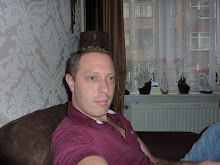Stretch MetroCluster can support a maximum of 500 meters between nodes at a speed of 2Gbps. Fabric MetroCluster, through the use of Fibre Channel switches, extends this distance to 100km at the same speed. At 4Gbps speeds, these distances are roughly cut in half unless using the Brocade 300, 5000 or 5100, which leaves this maximum distance at 100km.
CABLE TYPE
As shown in Table 3, the cable type affects both distance and speed. Single-mode cable is supported only for the inter-switch links. Example 1: A customer has 250 meters between sites and wants to run at 4Gbps. The OM-3 cable type is required. Example 2: A customer currently has a MetroCluster configuration running at 2Gbps with a distance of 300 meters over OM2 cabling and wants to upgrade to 4Gbps speeds. Upgrading the cabling will not help, because OM3 has a maximum of 270 meters. In this case the choices would be:
• Remain at 2Gbps speeds. Customers with the new ESH4 disk shelves could still use them at this distance, as long as the shelf speed is set to 2Gbps.
• Test current optical network infrastructure to make sure that attenuation and latency are acceptable.

The maximum distance shown in the picture is typically due to the standard 1310nm SFPs. Use of high-power SFPs can extend this dark fiber up to 30km. Using 1550nm high-power SFPs, a distance of 70–100km can be achieved. This topic is discussed in much greater technical detail in the following technical reports:
• MetroCluster Upgrade Planning Guide (TR-3517)
• Optical Network Installation Guide (TR-3552)
There are four types of Small Form-factor Pluggables (SFPs) associated with the Fabric MetroCluster configuration. They are:
Short-Wavelength Laser (SWL) Short Wavelength Laser transceivers based on 850nm lasers are designed to transmit short distances. This is the most common type of media and is the default on the Brocade 200E.
Long Wavelength Laser (LWL) Long Wavelength Laser transceivers may be based on 1310nm lasers. They are used for long distance native FC links. Generally, these media types are used with single-mode fiber cable.
Extended Long Wavelength Laser (ELWM) Extended Long wavelength Laser transceivers may be based on 1550nm lasers. They are used to run native Fibre Channel connections over even greater distance than LWL media can support. Generally these media types use single-mode fiber cable.
WDM Both coarse (CWDM) and dense (DWDM) SFP transceivers are commercially available for multi-wavelength channel transmission inside single mode fibers.
The type of SFP transceiver required is a function of the distance and the interconnect technology used. Table 2.4 summarizes the types and specifications for the SFP transceivers supported by the NetApp solution.





cool post and nice explanation about sfp transceiver module.
ReplyDeleteSFP Transceiver
I like to fix things all the time, and i always have a lot of cables around me, around my house. But i believe they are very useful, like this blog. I liked it very much.
ReplyDeletebuy viagra
Hi, is there any other way to use Fabric MetroCluster without the use of dark fibers? I had a two datacenters with a distance of 30km between them. Thanks a lot. Regards.
ReplyDelete